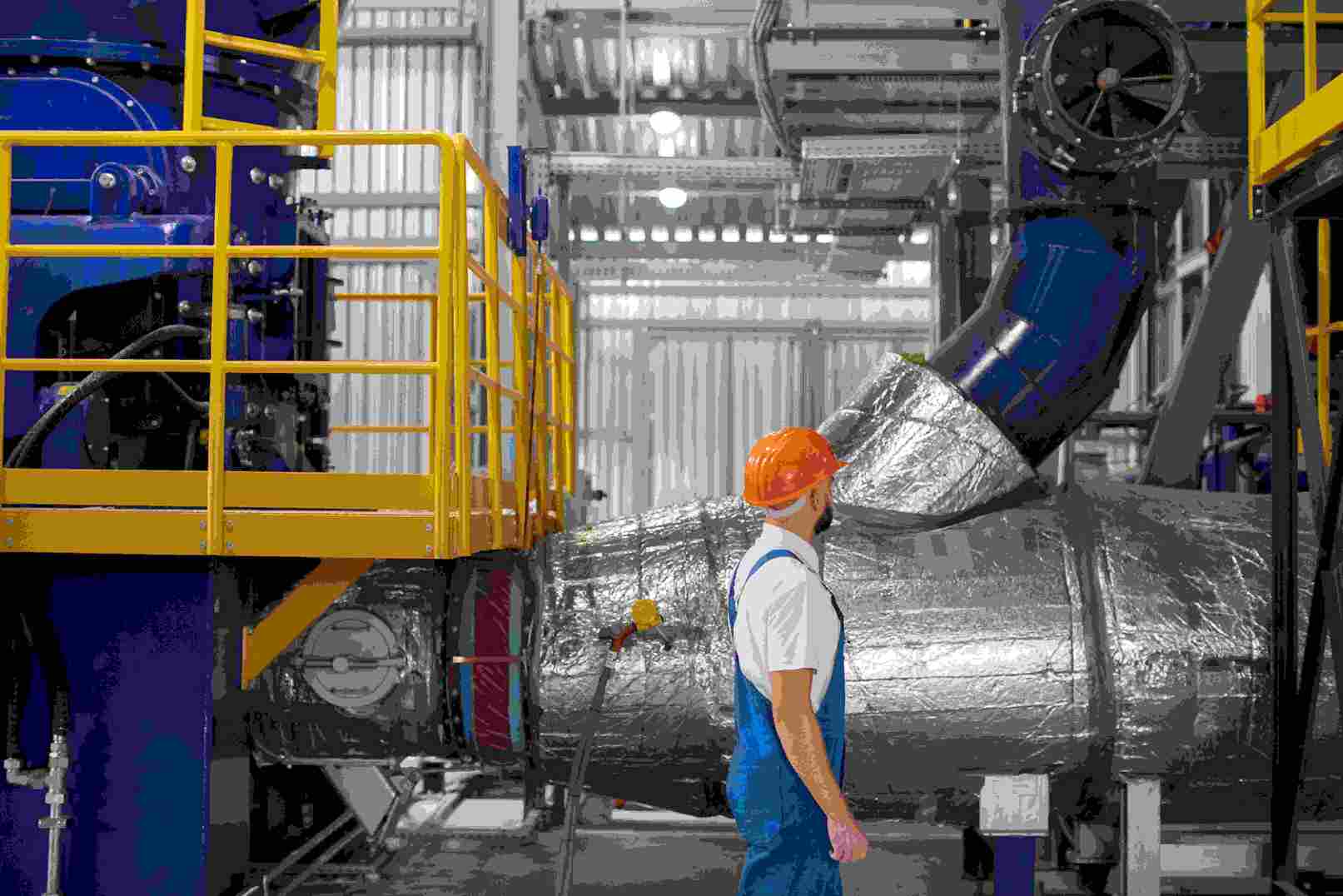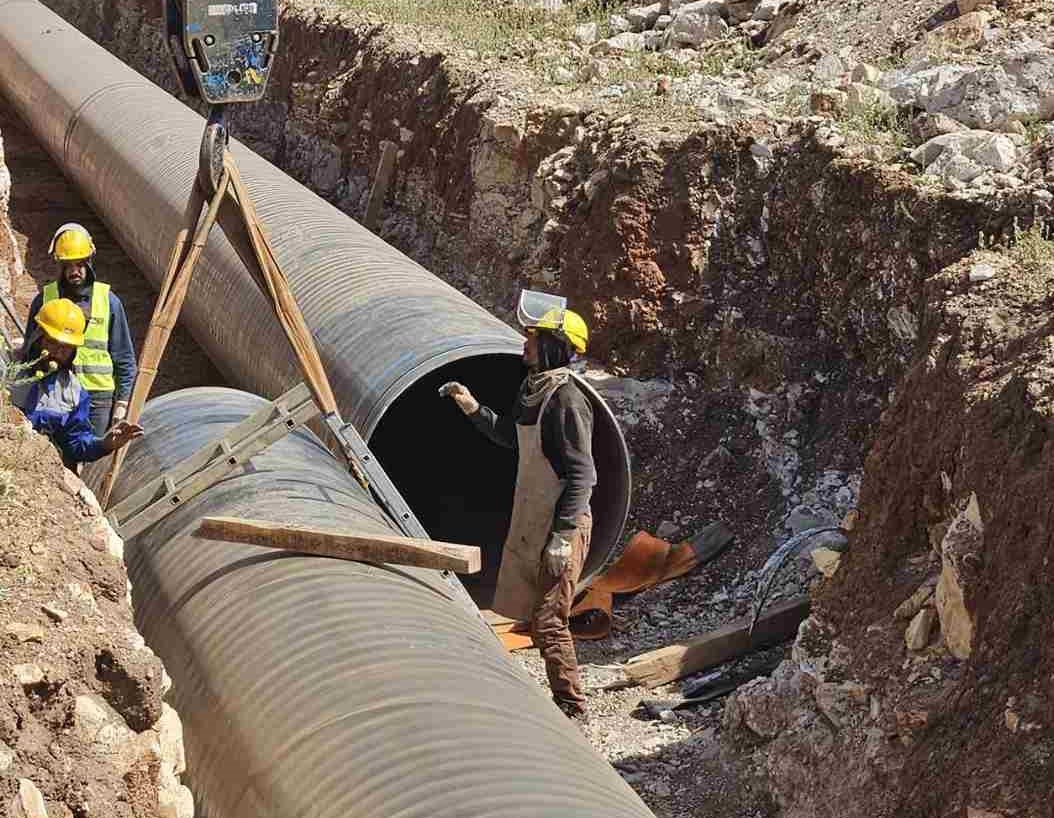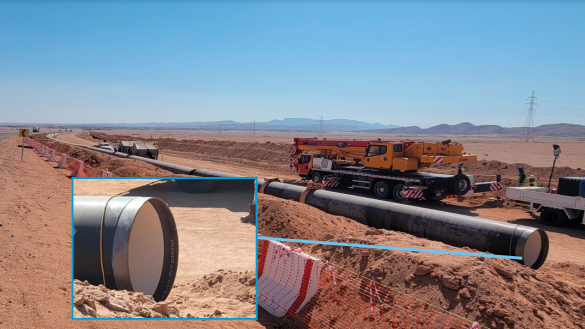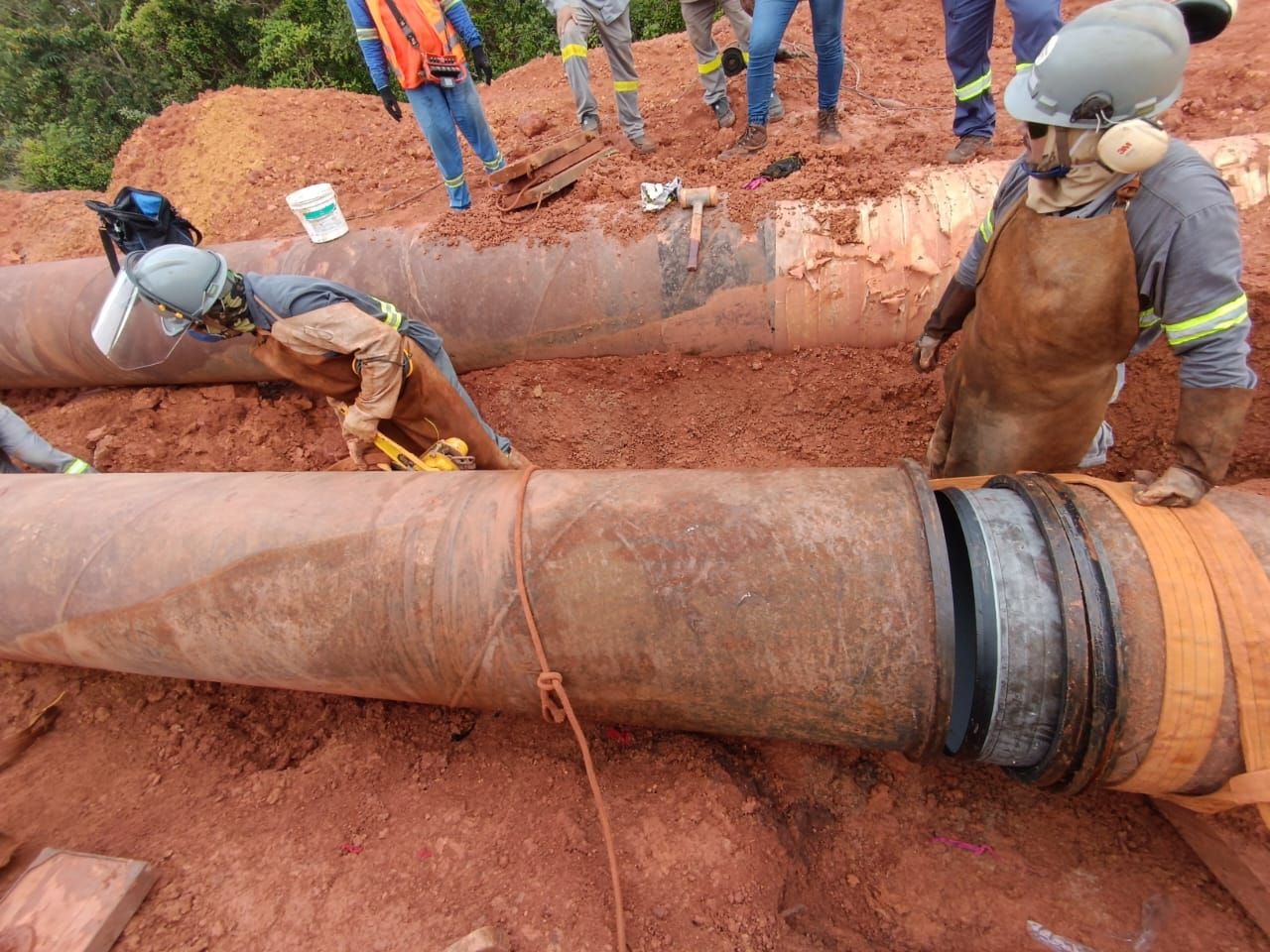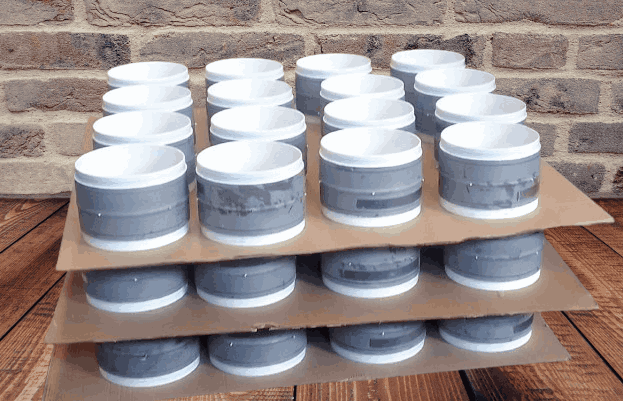If you’re wondering around to know how to tell if a pipe burst, read on to learn everything in detail.
A burst pipe is one of the most dreaded plumbing issues homeowners face. Not only can it cause significant water damage, but it can also lead to costly pipeline repairs and potential health hazards.
Identifying a burst pipe early on can make all the difference in minimizing the damage and preventing further complications. This blog will discuss five common signs to watch out for determining if a pipe has burst, helping you take swift action and protect your home.
Let’s get started.
Pipe Burst: Explanation
A pipe burst is when a plumbing pipe, typically made of materials like copper, PVC, or galvanized steel, develops a crack or a hole, causing water to leak uncontrollably. Pipe bursts can occur for various reasons, such as freezing temperatures, age-related deterioration, excessive water pressure, internal pipeline corrosion, physical damage, or poor installation.
When a pipe bursts, water can rapidly escape from the damaged area, leading to significant water loss and potential damage to the surrounding property. The severity of the bursting can range from minor leaks to large ruptures that release a substantial amount of water. Burst pipes can occur in any part of a building’s plumbing system, including supply lines, drainage pipes, and sewer lines.
Read: “Sucker Rod: What it is and Why is it Important”
Reasons for Pipe Bursting
Pipe bursts can occur for various reasons, and understanding these causes is essential for preventive measures. Here are some common reasons for pipe bursts:
1. Freezing Temperatures
In cold climates, water inside pipes can freeze and expand, putting immense pressure on the walls. This increased pressure can lead to cracks or ruptures, causing the pipe to burst when the frozen water thaws.
2. Corrosion
Over time, pipes can corrode due to chemical reactions between the pipe material and the water flowing through them. Pipeline corrosion weakens the pipe walls, making them more susceptible to bursting.
3. Age and Wear
Older pipes, especially those made from galvanized steel or cast iron, may weaken and deteriorate over time. The combination of age and wear can lead to pipe bursts.
4. Water Pressure Surges
Rapid fluctuations in water pressure within the plumbing system can stress the pipes, causing them to weaken or fail. Pressure surges can result from various factors, such as water hammers, water main breaks, or sudden changes in water usage.
5. Clogs and Blockages
Persistent clogs in the pipes can lead to pressure buildup behind the blockage. If the pressure becomes too great, the pipe may burst.
6. Tree Root Intrusion
In outdoor plumbing systems, tree roots can infiltrate pipes for water and nutrients. As roots grow, they can pressure the pipe walls, leading to cracks and eventual bursts.
7. Poor Installation
Improperly installed or poorly connected pipes can be more susceptible to leaks and bursts over time. The shoddy quality or low-quality materials can contribute to these issues.
8. Ground Shifting
Earthquakes, construction activities, or soil erosion can cause the ground to shift, putting stress on buried pipes. Over time, this stress can lead to pipe failures.
9. High Water Pressure
While low water pressure can indicate a burst pipe, excessively high water pressure can also damage pipes. High pressure can cause pipes to weaken or develop leaks that may eventually lead to a burst.
10. Physical Damage
Pipes can suffer damage from accidental impacts, heavy objects falling on them, or excavation work nearby. Such physical damage weakens the pipes and makes them more prone to bursting.
11. Poor Maintenance
Lack of regular maintenance can allow minor issues, like leaks or corrosion, to worsen over time. Neglected pipes are more likely to fail and burst unexpectedly.
How To Tell If a Pipe Burst?
Following are some signs that will appear when a pipe bursts:
1. Water Pressure Fluctuations
One of the earliest signs of a burst pipe is water pressure fluctuations. If your faucets suddenly have reduced water pressure or your showerhead is producing a weak spray, it could indicate a problem within your plumbing system. A burst pipe can create a leak that disrupts the water flow, causing pressure imbalances throughout your home.
To check for water pressure issues, turn on different faucets around your house and see if they all have the same reduced flow. If you find inconsistent water pressure or a significant drop, it’s time to investigate further.
2. Unusual Sounds in the Pipes
Strange sounds emanating from your plumbing system can indicate a burst pipe. If you hear loud banging, rattling, or hissing noises when you turn on your faucets, it could be a sign of water trying to pass through a restricted or damaged pipe.
These sounds often occur due to water hammer, which happens when water is abruptly stopped or redirected in the pipes. Water hammers can cause damage to the pipes, leading to leaks and eventual bursts.
3. Wet Spots or Water Stains
Water stains on your floors, walls, or ceilings are telltale signs of a plumbing issue. When a pipe bursts within your walls or under the floorboards, it can release water that seeps into nearby surfaces, causing visible dampness or discoloration.
Inspect your home correctly for any signs of water damage, particularly in areas close to plumbing fixtures, such as sinks, toilets, and appliances like dishwashers and washing machines. Addressing these water stains promptly can help prevent further structural damage and mold growth.
4. Unpleasant Odors
A burst pipe can lead to standing water in hidden spaces, like the walls or under the floor. Stagnant water can create a foul smell that permeates your home. If you feel a musty or mildew-like odor but can’t locate the source, you may have a hidden water leak caused by a burst pipe.
Addressing this issue quickly is crucial as standing water can cause a breeding ground for mold and bacteria, posing health risks to you and your family.
5. Sudden Increase in Water Bills
Monitoring your water bills is essential for detecting potential plumbing issues. If you notice a significant and unexplained increase in your water usage and bills, it could indicate a burst pipe. The continuous water flow from the leak can cause your water meter to record higher consumption than usual.
To check for a potential leak, turn off all water-consuming appliances and fixtures, including dishwashers, washing machines, and irrigation systems. Take a reading of your water meter and wait a few hours without using any water. If the meter reading changes during this time, it suggests a leak in your plumbing system.
What to Do If You Suspect a Burst Pipe?
If you’ve noticed any of the signs mentioned above or suspect a burst pipe, it’s essential to take immediate action:
1. Shut off the Water Supply
Find the main water shut-off valve and turn it off to stop the water flow. This step will help prevent further water damage until the issue is resolved.
2. Inspect the Affected Area
Check the areas where you noticed the signs of a burst pipe. Look for visible leaks or water seepage and take note of any damage.
3. Call a Professional Plumber
While some minor plumbing issues can be DIY projects, a burst pipe requires the expertise of a licensed plumber. Contact a professional to assess the situation, identify the source of the leak, and provide appropriate repairs.
4. Document the Damage
Take photographs and videos of the affected areas and any visible water damage. These records may be helpful for insurance purposes and when filing a claim.
5. Address Water Cleanup
If water has already caused damage to your property, consider hiring a water damage restoration company. They have the expertise and equipment to dry and restore affected areas properly.
Prevention Tips for Avoiding Burst Pipes
Preventing a burst pipe is always preferable to dealing with the aftermath. Here are some tips to reduce the risk of pipe bursts:
1. Insulate Exposed Pipes
Insulate pipes in unheated or exposed areas, such as crawl spaces and attics, to protect them from freezing during cold weather.
2. Maintain Proper Heating
Keep your home heated adequately, especially during freezing temperatures, to prevent pipes from freezing and bursting.
3. Repair Leaks Promptly
Address any leaks or plumbing issues as soon as you notice them, as they can worsen over time and lead to pipe bursts.
4. Drain Outdoor Faucets
Before winter sets in, disconnect and drain outdoor hoses and faucets to prevent frozen water from causing pipe bursts.
5. Open Cabinet Doors
During cold weather, leave cabinet doors under sinks to help warm air to circulate the pipes and prevent freezing.
Conclusion
In conclusion, identifying the signs of a burst pipe early on can save you from costly repairs and extensive water damage. Watch for low water pressure, unusual water puddles, damp or moldy smells, discolored water, and unexplained increases in your water bills.
If you suspect a burst pipe, take immediate action to shut off the water supply and call a professional plumber for repairs. Following prevention tips can reduce the risk of pipe bursts and protect your home from potential water-related disasters. You can also use experienced professionals like the Lined Pipe System team to get the best pipeline services.

